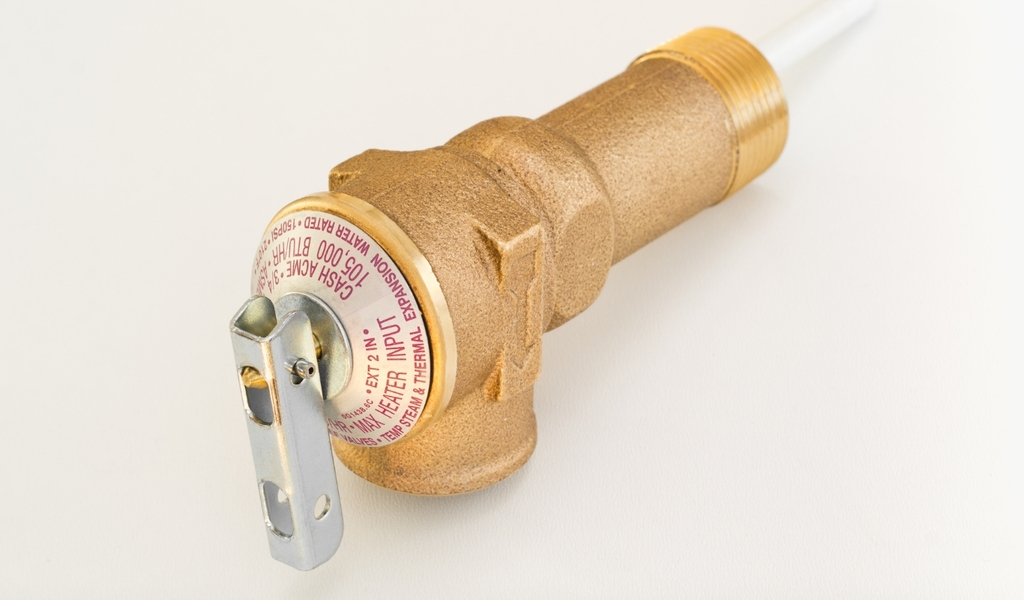What Is a TPR Valve – A Comprehensive Guide

As a homeowner, it’s our responsibility to ensure the safety and efficiency of our home’s utilities, with particular attention to the hot water system. A critical component of this system is the hot water heater pressure relief valve, also known as the Temperature Pressure Relief (TPR) valve.
This device plays a crucial role in maintaining the optimal water temperature and pressure within your hot water heater, preventing the risk of excess pressure build-up. Understanding how the TPR valve functions can save you from potential disasters, highlighting the importance of regular maintenance and awareness of your home’s hot water system.
This guide aims to illuminate the vital role of the TPR valve, ensuring your home remains a safe haven.
How Does a Temperature Pressure Relief Valve?
The TPR valve is a crucial safety mechanism in your hot water tank that monitors both pressure and temperature. Essentially, it’s a valve that acts as a guardian against the dangers of high water pressure and excessive temperature.
When either the pressure or temperature inside the hot water tank exceeds safe limits, the TPR valve is triggered to open. This opening allows the tank to release excess pressure or temperature, preventing potential damage or even explosions.
The TPR valve is working effectively when it maintains the balance, ensuring the pressure and temperature within the tank are within safe parameters.
Regular checks are vital to confirm the valve’s functionality, as a stuck or malfunctioning valve could lead to a critical situation. The mechanism by which the valve opens to relieve the tank of high water pressure or temperature illustrates the sophisticated yet essential nature of this device in maintaining home safety.
Are TPR Valves Required in All Water Heaters?
Yes, TPR valves are a mandatory safety feature in all types of water heaters, including gas hot water tanks and boilers. This safety valve ensures that the temperature and pressure within the tank do not exceed safe limits.
Although it might not activate often, the presence of a TPR valve is crucial to keep your water pressure in the tank from becoming dangerously high.
By functioning as a temperature and pressure relief mechanism, it effectively prevents the risk of overheating and pressure build-up, safeguarding your home and family.
How Can You Tell if Your TPR Valve Is Bad?
Low or Fluctuating Water Pressure
When the valve is leaking, it might cause low or fluctuating water pressure in your system. This can happen if sediment blocks the valve, preventing it from closing properly. The leak allows water to escape, which can lead to inconsistent water pressure. Regular checks can help identify if the valve is the culprit behind the water pressure issues.
No Water Pressure
A complete lack of water pressure might indicate a significant leak where the valve may be discharging water continuously. This could be due to the valve being stuck open, often a consequence of sediment build-up or damage. Without the necessary pressure, the water heater tank cannot function properly, affecting the supply throughout your home.
Hammering or Vibrating Noises
If you hear hammering or vibrating noises from the valve area, it could mean that the temperature or pressure is not stable. These sounds often occur when the valve opens and closes rapidly in an attempt to relieve the pressure or temperature fluctuations. It’s crucial to inspect the valve to ensure it is operating smoothly and not compromised by sediment or damage.
Leaking
Leak water from the TPR valve may indicate that the water heater tank is experiencing unusually high pressure. This is a safety feature of the valve, but continuous leaking suggests that the issue is ongoing and the temperature or pressure is not being regulated effectively. Regular maintenance checks can identify if adjustments are needed to resolve the high-pressure issue.
How Often Should You Test Your TPR Valve?
At AC Plumbing, we always recommend our clients in Brisbane, Queensland, test their TPR valve every six months. This way, you can be confident that your hot water system is functioning correctly and will continue to do so.
How to Test Your TPR Valve
Now, let’s walk you through how to test your TPR valve in just a few simple steps:
- Turn off the water heater’s power supply: For gas water heaters, turn the gas valve to ‘pilot’ or ‘off’. For electric heaters, switch off the circuit breaker.
- Locate the TPR valve: It can be found either on the top or side of the tank, connected to a discharge pipe or tube.
- Place a bucket under the discharge pipe: This will catch any small amount of water that may be released during testing.
- Check the surrounding area for obstructions: Ensure there’s no obstruction around the TPR valve and discharge pipe.
- Lift the valve’s lever gently: Open the valve by lifting its lever, allowing water to flow into the bucket. This should release a small amount of water.
- Observe for leaks: After releasing the lever, check the valve for leaks. A properly functioning valve will stop releasing water and show no signs of leakage.
- Inspect the drain valve at the bottom: While you’re maintaining the TPR valve, it’s a good opportunity to check the drain valve at the bottom of the tank for any leaks or blockage.
- Turn the power supply back on: Once the testing is complete and everything is in order, turn the gas valve back to its original position or switch the circuit breaker on. Allow the water to heat up before using it.
- Regularly monitor the TPR valve: Although testing is recommended every six months, keeping an eye on the TPR and drain valve for leaks or unusual behavior is wise.
If you are not sure how to test your TPR valve, or if you are experiencing any issues with it, don’t hesitate to contact a licensed plumber. It is always better to be safe than sorry when it comes to home safety and the proper functioning of your hot water system.
Can You Install a TPR Valve Yourself?
While you might think it is easy to replace the valve yourself to save on costs, we strongly advise against it. A TPR valve installation requires specific knowledge and experience to ensure it is done correctly and safely.
In Queensland, Australia, only licensed plumbers are legally allowed to install or replace a TPR valve. This ensures that the device is installed correctly and meets all safety standards. Attempting to install a TPR valve yourself may result in potential hazards and could void your home insurance coverage.
Call AC Plumbing Today
For all your residential plumb works, including TPR valve installation, inspection, and maintenance services in Brisbane, Queensland, contact the licensed professionals at AC Plumbing today. We offer reliable, high-quality services to keep your hot water system running smoothly and safely. Plus, we have interest-free financing options available for your convenience.
Don’t wait until it’s too late, call us today!



